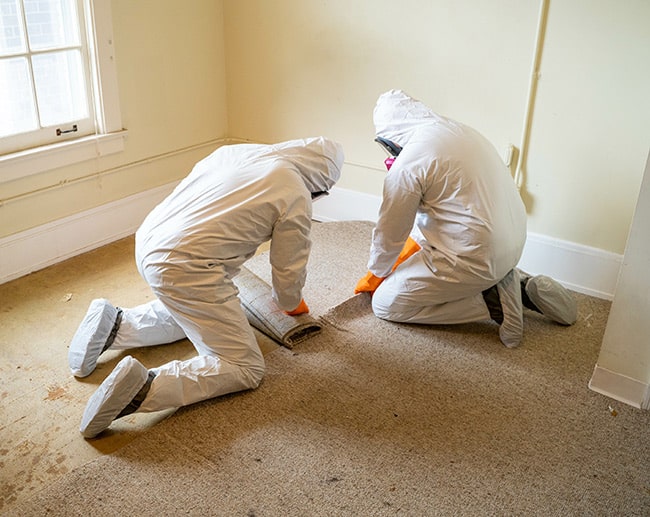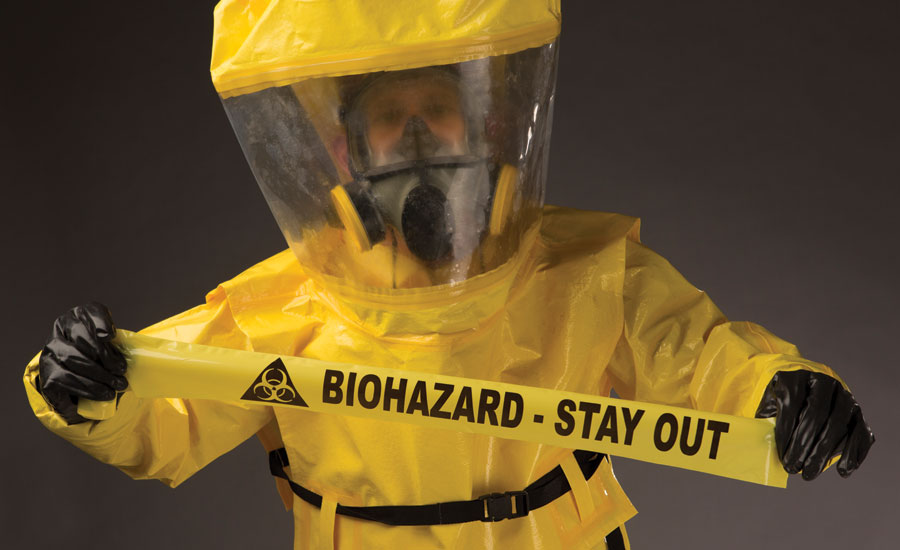Professional Biohazard Cleansing and Decontamination for Blood, Bodily Fluids, and Hazardous Products
The possible wellness dangers linked with direct exposure to biohazards emphasize the vital requirement for thorough handling and complete cleaning. As we navigate the detailed landscape of biohazard cleanup, recognizing the nuances of laws, compliance, and the specialized equipment at play ends up being vital in making certain a extensive and secure decontamination procedure.
Wellness Threats of Biohazard Direct Exposure
Direct exposure to biohazards poses significant wellness dangers that can result in severe repercussions for individuals and neighborhoods alike. Biohazards include a variety of organic materials, consisting of blood, physical liquids, mold, bacteria, infections, and other possibly infectious materials. When individuals come into contact with these biohazards, whether via accidents, improper handling, or ecological exposure, they encounter the risk of having major illnesses or conditions.
One of the primary health and wellness risks linked with biohazard exposure is the transmission of transmittable diseases. Bloodborne microorganisms such as HIV, hepatitis B and C, and different bacteria can be existing in biohazardous materials, posturing a straight danger to human health. Breathing in air-borne biohazards like mold and mildew spores or coming right into contact with infected surface areas can also result in respiratory problems, allergies, and other adverse wellness impacts.
Additionally, biohazard exposure can have long-lasting wellness effects, with some conditions showing up years after the preliminary contact (Blood Cleanup). As a result, it is critical to focus on appropriate biohazard cleaning and decontamination to minimize these health and wellness dangers and guarantee the safety of individuals and neighborhoods

Specialized Educating for Biohazard Clean-up
When it involves managing biohazard cleaning successfully and safely, specialized training plays a fundamental function in ensuring proper decontamination procedures are adhered to. Biohazard cleaning calls for particular understanding and abilities to efficiently minimize risks associated with bloodborne microorganisms, bodily fluids, and hazardous materials. Professionals learnt biohazard cleaning undergo strenuous instruction on just how to safely manage, remove, and take care of biohazardous products to avoid contamination and exposure.
Specialized training for biohazard cleanup covers a variety of vital subjects, including proper personal protective devices (PPE) use, bloodborne virus understanding, purification strategies, and unsafe waste disposal procedures. Individuals learnt biohazard clean-up are geared up with the needed proficiency to examine contamination degrees, determine possible dangers, and carry out suitable cleaning procedures in compliance with governing criteria.
Continuous training and education are vital in the field of biohazard cleaning to remain upgraded on the most recent purification technologies, safety and security procedures, and guidelines. By buying specialized training, biohazard cleaning experts can effectively respond to emergency situation clean-up scenarios and protect both public health and the atmosphere.
Importance of Appropriate Purification Methods
Utilizing correct purification strategies is vital in biohazard cleanup to effectively remove dangerous materials and decrease wellness dangers. Effective decontamination not just ensures the elimination of visible traces of blood, bodily liquids, and other biohazards but also targets undetectable pathogens that might present major wellness hazards if not appropriately eliminated. By following rigid purification methods, educated professionals can significantly minimize the threat of exposure to unsafe microorganisms, viruses, and imp source microorganisms that might cause infections or diseases.
Appropriate decontamination methods involve the usage of specific devices and disinfectants that are especially made to reduce the effects of biohazards efficiently. Complete cleaning and sanitation of infected areas are important to stop the spread of pathogens and ensure a secure setting for residents. In addition, the right disposal of biohazardous waste complying with purification treatments is vital in avoiding contamination of other surfaces or people.

Devices and Devices for Safe Cleaning
The correct devices and tools play a vital role in guaranteeing the secure and reliable clean-up of biohazardous products. When dealing with blood, physical fluids, or harmful products, biohazard cleansing specialists rely upon specialized gear to minimize direct exposure risks and thoroughly decontaminate the damaged area. Personal protective devices (PPE) such as gloves, coveralls, masks, and goggles are important to protect versus direct call with potentially contagious products. In addition, biohazard cleaning sets containing disinfectants, absorptive products, and biohazard bags are utilized to safely dispose and contain of polluted things. Blood Cleanup.
Advanced cleansing tools like hospital-grade disinfectants, HEPA-filtered vacuum cleaners, and fogging devices are employed to sterilize surface areas and get rid of biohazards efficiently. Specialized equipment such as sharps containers and biohazard garbage disposal bins are made use of to securely manage sharp items and biohazardous waste products. By using the appropriate tools and devices, biohazard cleansing experts can ensure a detailed cleaning process that focuses on safety and security and lessens wellness risks for both workers and owners of the afflicted space.
Laws and Conformity in Biohazard Cleansing
Appropriate adherence to policies and conformity standards is extremely important in biohazard cleansing to make sure the safety of both workers and the atmosphere. Federal government companies such as OSHA (Occupational Safety and Wellness Administration) and the EPA (Environmental Defense Agency) have actually developed specific guidelines for biohazard cleaning procedures to lessen health and wellness threats and environmental contamination. These regulations cover a variety of viscera cleanup detail clean command aspects consisting of the handling, transportation, and disposal of biohazardous materials, in addition to the essential training and safety devices required for personnel involved in the clean-up procedure.
Biohazard cleaning companies need to stay current with anonymous these regulations to ensure that their procedures fulfill the needed security criteria. Failing to comply with these guidelines can cause severe repercussions, including penalties, lawful action, and threatening the health of people and the setting. By following rigid regulations and conformity steps, biohazard cleaning business can properly minimize threats and make sure a extensive and risk-free clean-up procedure for all events entailed.
Verdict
In verdict, biohazard cleansing and decontamination require specific training, correct methods, and adherence to policies. Direct exposure to blood, bodily fluids, and harmful products positions significant health and wellness threats, making it critical to make use of the appropriate equipment and devices for safe cleaning. By complying with stringent methods and guidelines, specialists can successfully minimize the dangers related to biohazard direct exposure and make sure the safety and security of both themselves and others.
As we navigate the elaborate landscape of biohazard cleaning, understanding the subtleties of policies, conformity, and the specialized equipment at play comes to be essential in making certain a secure and detailed decontamination process. (Blood Cleanup)
When it comes to managing biohazard cleanup successfully and safely, specialized training plays a basic role in guaranteeing appropriate purification procedures are adhered to.Utilizing correct purification techniques is crucial in biohazard cleaning to efficiently get rid of hazardous products and lessen wellness threats. In addition, biohazard cleansing packages including anti-bacterials, absorbent materials, and biohazard bags are used to securely include and get rid of of contaminated things.
Government firms such as OSHA (Occupational Safety and Health Management) and the EPA (Environmental Security Company) have actually developed particular standards for biohazard cleaning procedures to lessen wellness threats and ecological contamination.